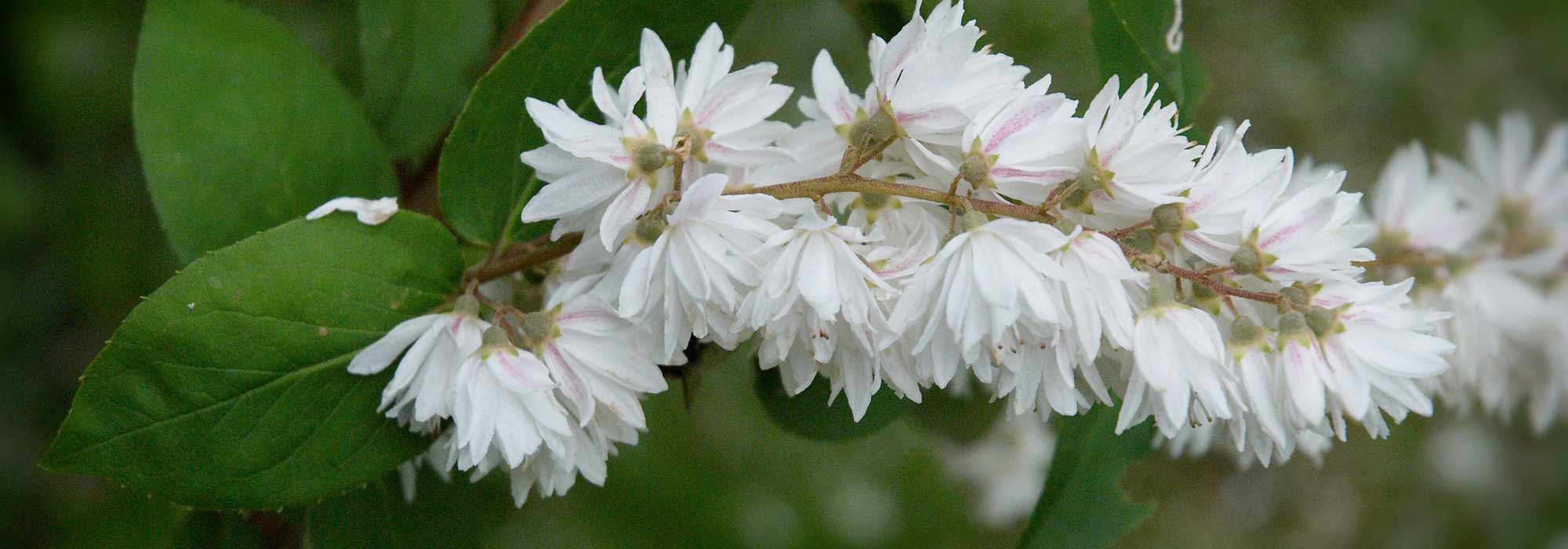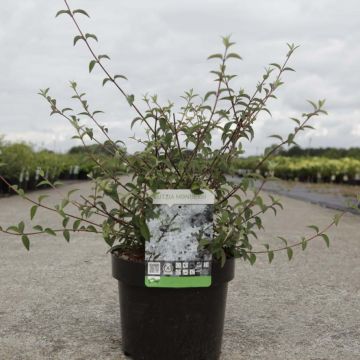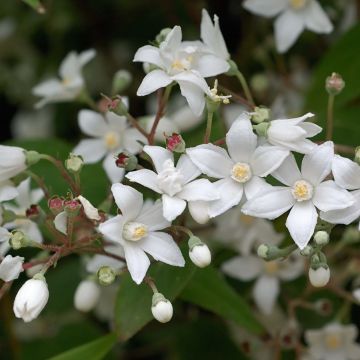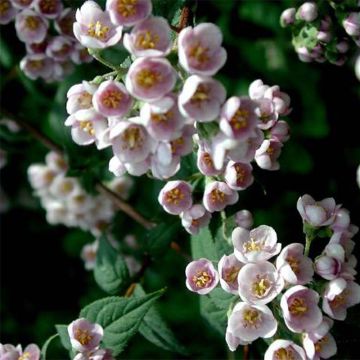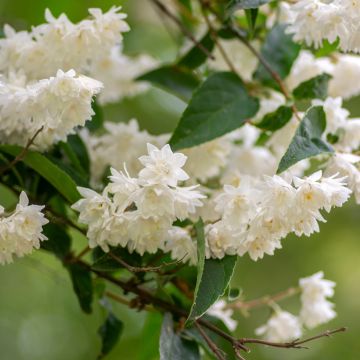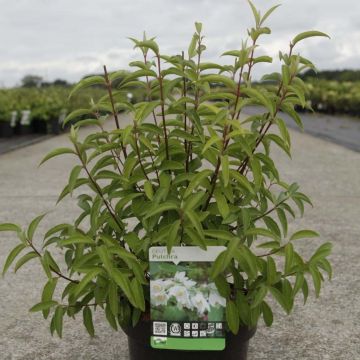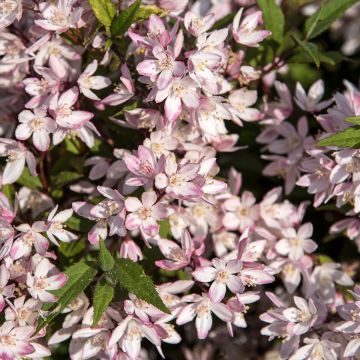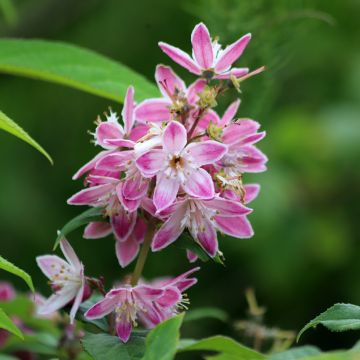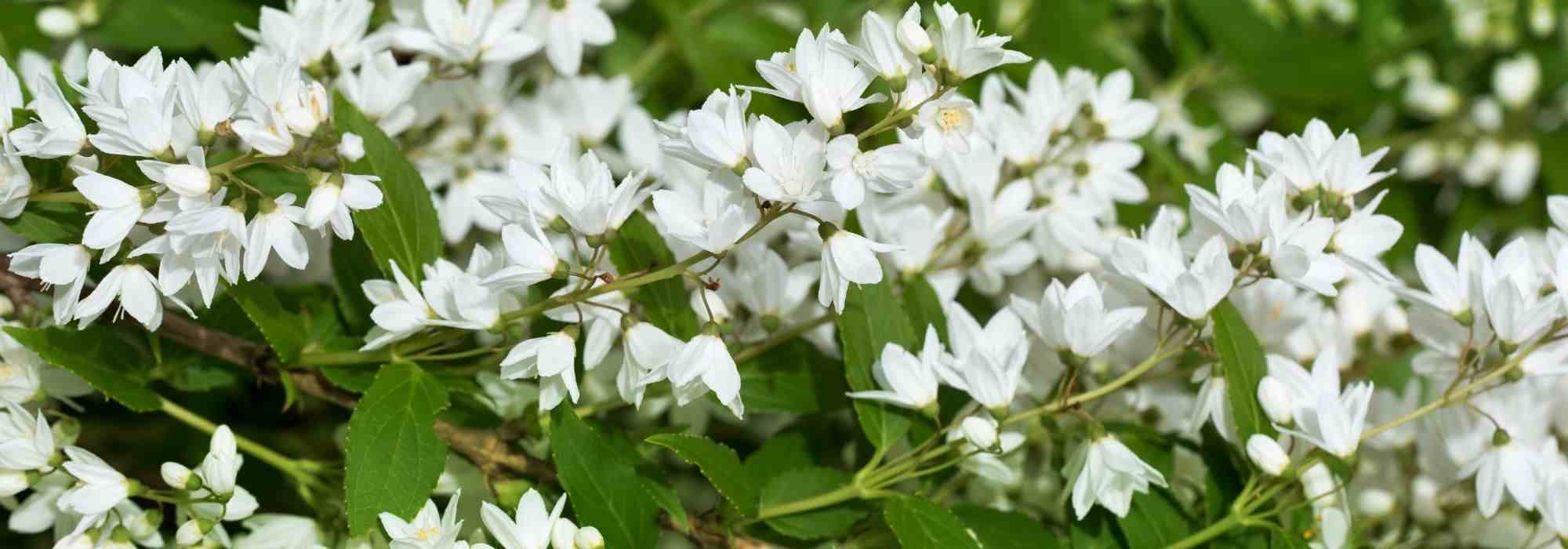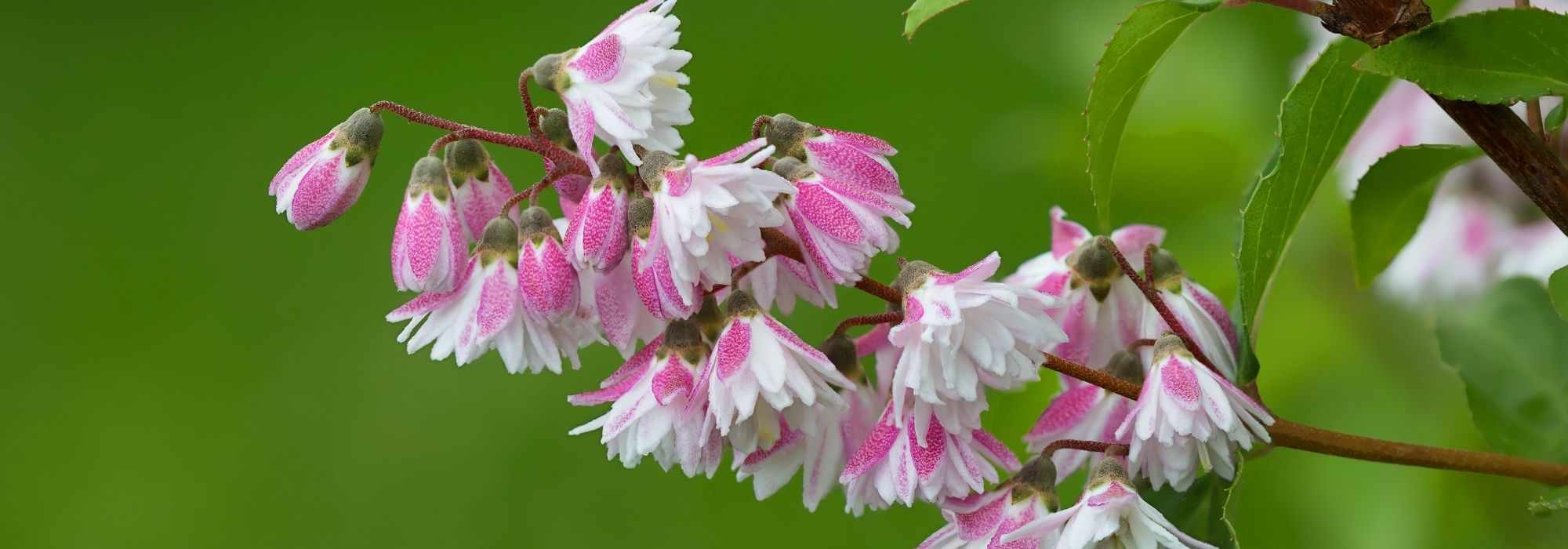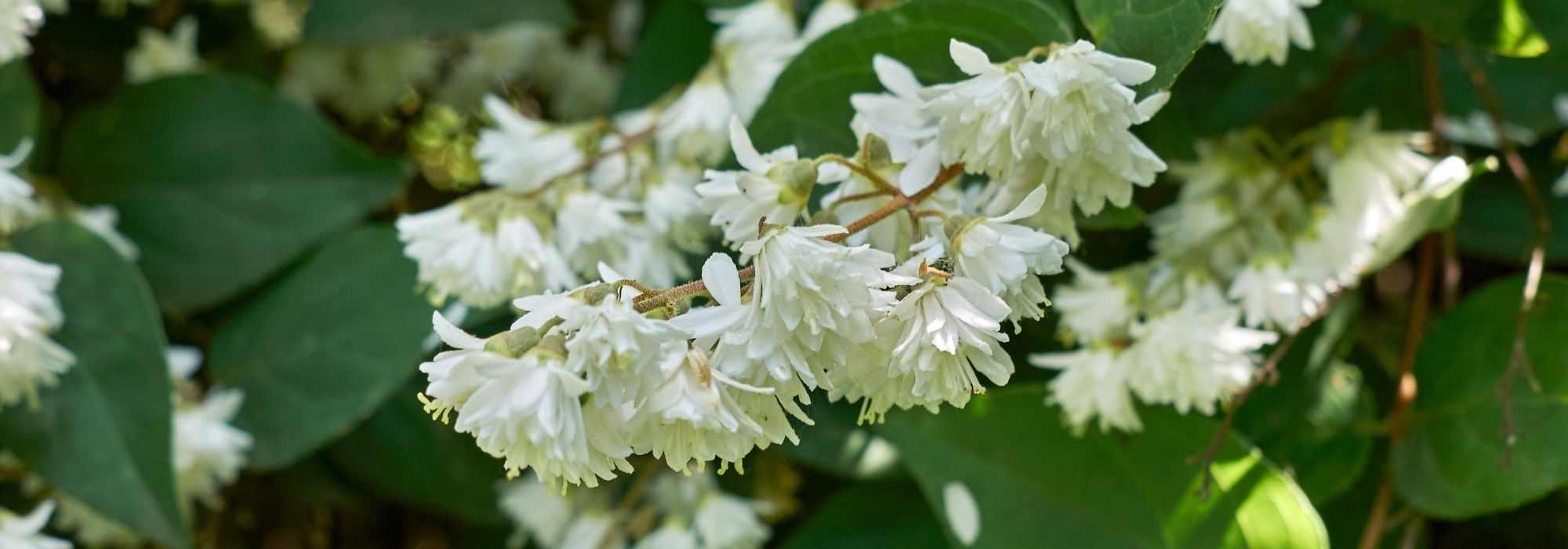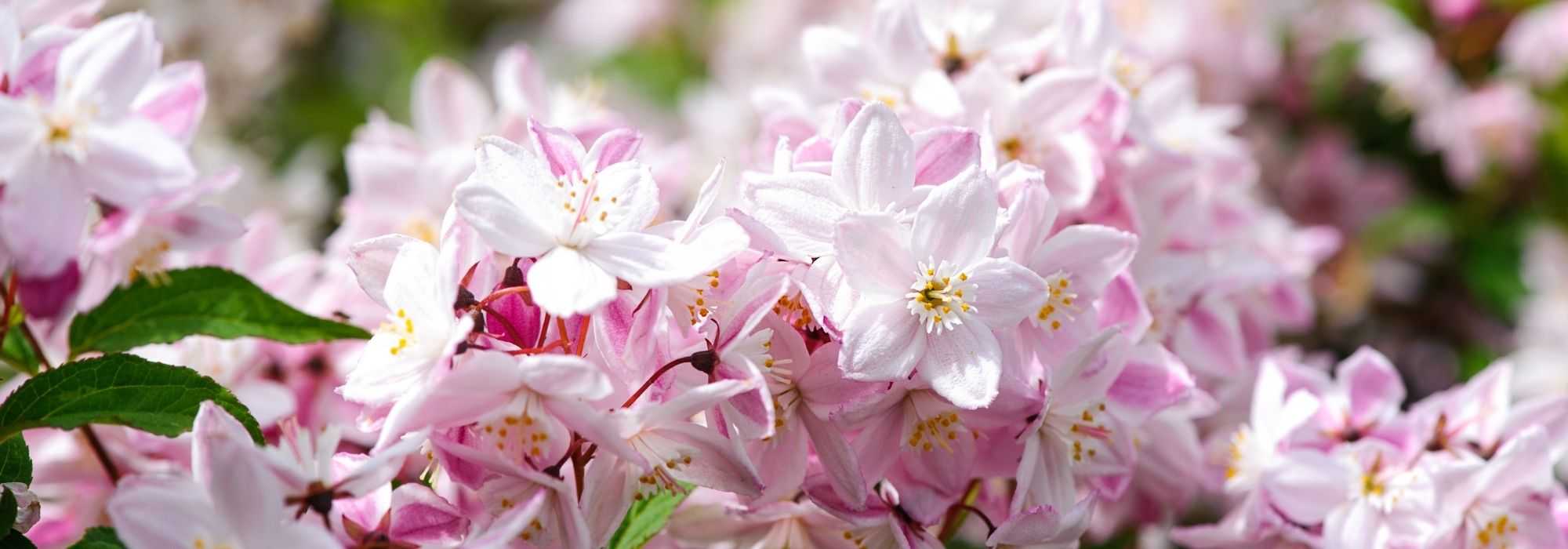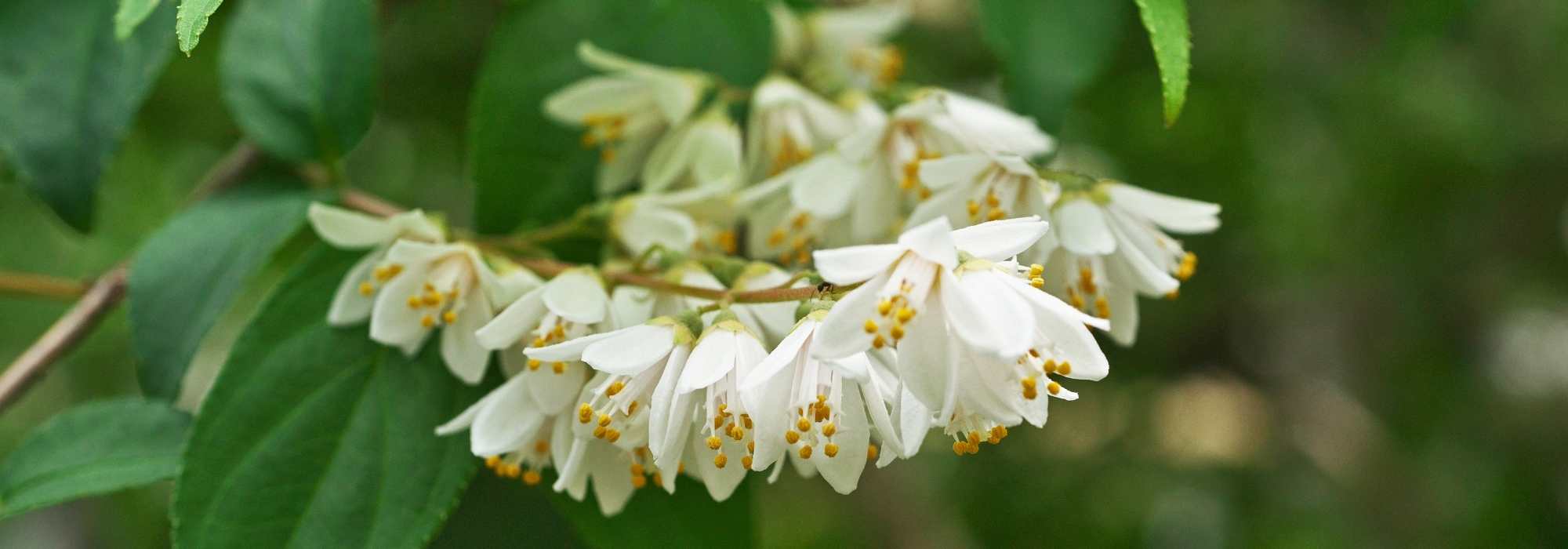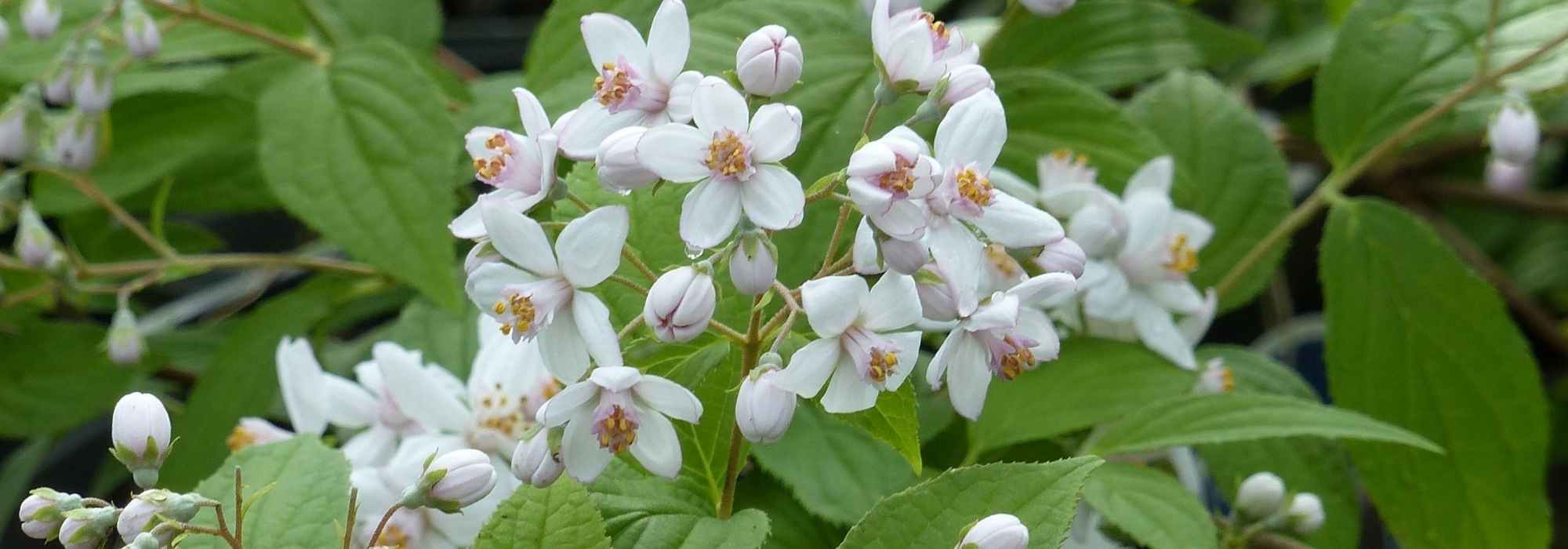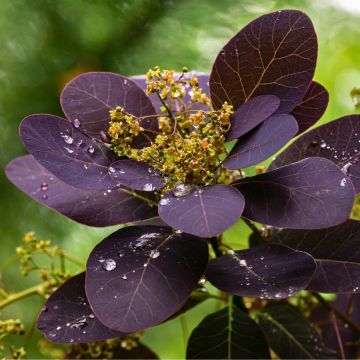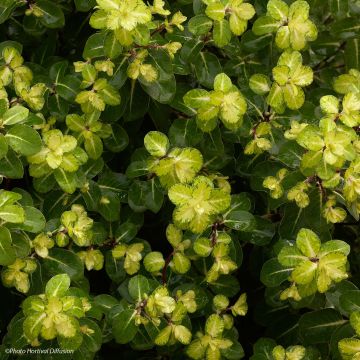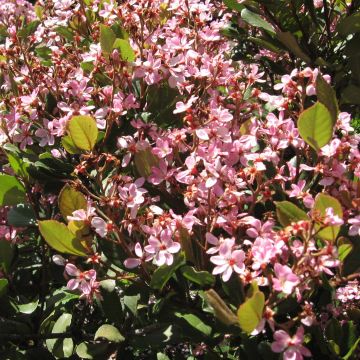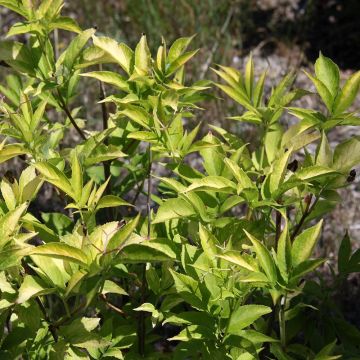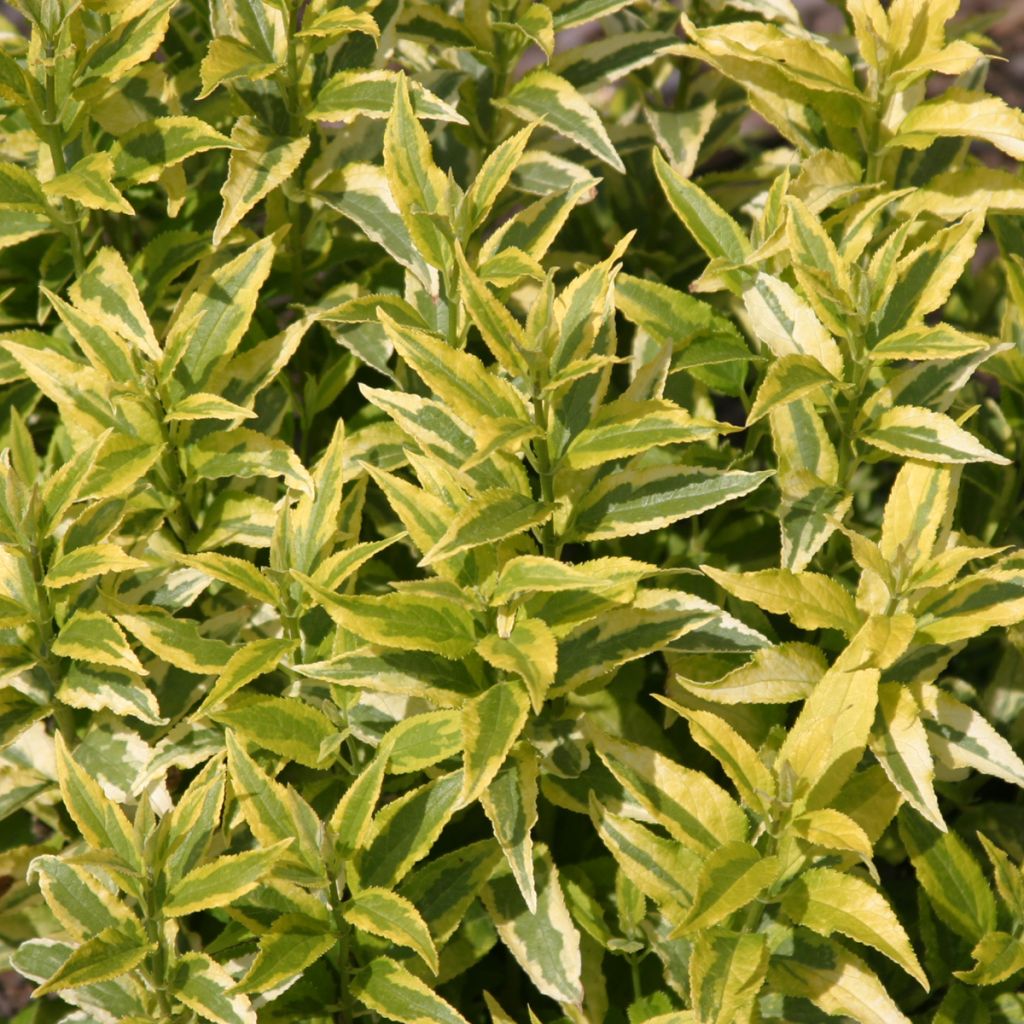

Deutzia gracilis Variegata
Deutzia gracilis Variegata
Deutzia gracilis Variegata
Japanese Snow Flower
Special offer!
Receive a €20 voucher for any order over €90 (excluding delivery costs, credit notes, and plastic-free options)!
1- Add your favorite plants to your cart.
2- Once you have reached €90, confirm your order (you can even choose the delivery date!).
3- As soon as your order is shipped, you will receive an email containing your voucher code, valid for 3 months (90 days).
Your voucher is unique and can only be used once, for any order with a minimum value of €20, excluding delivery costs.
Can be combined with other current offers, non-divisible and non-refundable.
Home or relay delivery (depending on size and destination)
Schedule delivery date,
and select date in basket
This plant carries a 24 months recovery warranty
More information
We guarantee the quality of our plants for a full growing cycle, and will replace at our expense any plant that fails to recover under normal climatic and planting conditions.
Would this plant suit my garden?
Set up your Plantfit profile →
Description
Deutzia gracilis 'Variegata' is a delightful variety, well suited for decorating balconies, patios, and small spaces. This small deciduous bush, with a compact habit, is very bright from spring to autumn and is covered in a multitude of small pure white bell-shaped flowers in late spring. It is hardy, easy to grow, undemanding in terms of soil, and ideal for beginner gardeners. Whether in a large border, a small hedge, or in a container, this deutzia will not disappoint!
Deutzia gracilis 'Variegata' belongs to the Hydrangeaceae family. It is a beautiful yellow variegated form of the classic Deutzia gracilis, native to Japan. This compact and deciduous bush typically reaches a height of 1m (3ft) with a spread of 80cm (32in), depending on growing conditions. It has spreading slender branches that become arching over time. Its foliage appears in spring and falls in autumn. The leaves are oblong lanceolate, slightly toothed, and measure 3 to 7cm (1 to 3in) long. The young leaves are a bright yellow, while the older ones are randomly variegated with creamy-yellow on a light green background. This foliage makes the bush attractive even outside the flowering period. The abundant flowering occurs in May or June, earlier or later depending on the climate. At its peak, the flowers almost completely cover the foliage. The flowers are small, bell-shaped, and white, measuring 2cm (1in) long. They are arranged in upright clusters 6 to 8cm (2 to 3in) long. Slightly fragrant, they attract pollinating insects. The deciduous foliage is absent in winter.
Deutzia gracilis 'Variegata' is an adaptable bush that can thrive in various climates. It is mainly used in shrub borders but also in low hedges, along with berberis, dwarf mock oranges like 'White Rock', weigelas, or even shrub roses. Its small size and decorative appearance make it suitable for container cultivation to adorn a large balcony or patio. In this usage, it can be compared to the 'Apple Blossom' Mexican orange, for example.
Somewhat outdated, deutzias (especially D. gracilis) are survivors of old gardens. They are almost indestructible bushes that require little effort but provide a great deal of satisfaction to the gardener.
Tips: Protect Deutzia gracilis 'Variegata' from north winds, which can affect its flowering. Late frosts result in the production of very small flowers. Its variegated foliage prefers slightly shaded areas during the hottest hours of the day.
Plant habit
Flowering
Foliage
Botanical data
Deutzia
gracilis
Variegata
Hydrangeaeceae
Japanese Snow Flower
East Asia
Other Deutzia
View all →Planting and care
Deutzia gracilis 'Variegata' is very easy to cultivate, as it is perfectly hardy (-20°C (-4°F)) and grows wherever the soil is deep and well-drained. In a sunny (not scorching) or semi-shady exposure, it can be planted from November to April and will need regular watering for the first two summers, especially if it is hot and dry. It becomes quite drought-resistant with age and reaches its adult size in 5 or 7 years. It is resistant to diseases.
Every year after flowering, prune back the faded branches just above a bud and as close to the stump as possible. Remove 1/3 of the old branches at their base.
Planting period
Intended location
Care
Planting & care advice
This item has not been reviewed yet - be the first to leave a review about it.
Similar products
Haven't found what you were looking for?
Hardiness is the lowest winter temperature a plant can endure without suffering serious damage or even dying. However, hardiness is affected by location (a sheltered area, such as a patio), protection (winter cover) and soil type (hardiness is improved by well-drained soil).

Photo Sharing Terms & Conditions
In order to encourage gardeners to interact and share their experiences, Promesse de fleurs offers various media enabling content to be uploaded onto its Site - in particular via the ‘Photo sharing’ module.
The User agrees to refrain from:
- Posting any content that is illegal, prejudicial, insulting, racist, inciteful to hatred, revisionist, contrary to public decency, that infringes on privacy or on the privacy rights of third parties, in particular the publicity rights of persons and goods, intellectual property rights, or the right to privacy.
- Submitting content on behalf of a third party;
- Impersonate the identity of a third party and/or publish any personal information about a third party;
In general, the User undertakes to refrain from any unethical behaviour.
All Content (in particular text, comments, files, images, photos, videos, creative works, etc.), which may be subject to property or intellectual property rights, image or other private rights, shall remain the property of the User, subject to the limited rights granted by the terms of the licence granted by Promesse de fleurs as stated below. Users are at liberty to publish or not to publish such Content on the Site, notably via the ‘Photo Sharing’ facility, and accept that this Content shall be made public and freely accessible, notably on the Internet.
Users further acknowledge, undertake to have ,and guarantee that they hold all necessary rights and permissions to publish such material on the Site, in particular with regard to the legislation in force pertaining to any privacy, property, intellectual property, image, or contractual rights, or rights of any other nature. By publishing such Content on the Site, Users acknowledge accepting full liability as publishers of the Content within the meaning of the law, and grant Promesse de fleurs, free of charge, an inclusive, worldwide licence for the said Content for the entire duration of its publication, including all reproduction, representation, up/downloading, displaying, performing, transmission, and storage rights.
Users also grant permission for their name to be linked to the Content and accept that this link may not always be made available.
By engaging in posting material, Users consent to their Content becoming automatically accessible on the Internet, in particular on other sites and/or blogs and/or web pages of the Promesse de fleurs site, including in particular social pages and the Promesse de fleurs catalogue.
Users may secure the removal of entrusted content free of charge by issuing a simple request via our contact form.
The flowering period indicated on our website applies to countries and regions located in USDA zone 8 (France, the United Kingdom, Ireland, the Netherlands, etc.)
It will vary according to where you live:
- In zones 9 to 10 (Italy, Spain, Greece, etc.), flowering will occur about 2 to 4 weeks earlier.
- In zones 6 to 7 (Germany, Poland, Slovenia, and lower mountainous regions), flowering will be delayed by 2 to 3 weeks.
- In zone 5 (Central Europe, Scandinavia), blooming will be delayed by 3 to 5 weeks.
In temperate climates, pruning of spring-flowering shrubs (forsythia, spireas, etc.) should be done just after flowering.
Pruning of summer-flowering shrubs (Indian Lilac, Perovskia, etc.) can be done in winter or spring.
In cold regions as well as with frost-sensitive plants, avoid pruning too early when severe frosts may still occur.
The planting period indicated on our website applies to countries and regions located in USDA zone 8 (France, United Kingdom, Ireland, Netherlands).
It will vary according to where you live:
- In Mediterranean zones (Marseille, Madrid, Milan, etc.), autumn and winter are the best planting periods.
- In continental zones (Strasbourg, Munich, Vienna, etc.), delay planting by 2 to 3 weeks in spring and bring it forward by 2 to 4 weeks in autumn.
- In mountainous regions (the Alps, Pyrenees, Carpathians, etc.), it is best to plant in late spring (May-June) or late summer (August-September).
The harvesting period indicated on our website applies to countries and regions in USDA zone 8 (France, England, Ireland, the Netherlands).
In colder areas (Scandinavia, Poland, Austria...) fruit and vegetable harvests are likely to be delayed by 3-4 weeks.
In warmer areas (Italy, Spain, Greece, etc.), harvesting will probably take place earlier, depending on weather conditions.
The sowing periods indicated on our website apply to countries and regions within USDA Zone 8 (France, UK, Ireland, Netherlands).
In colder areas (Scandinavia, Poland, Austria...), delay any outdoor sowing by 3-4 weeks, or sow under glass.
In warmer climes (Italy, Spain, Greece, etc.), bring outdoor sowing forward by a few weeks.






























